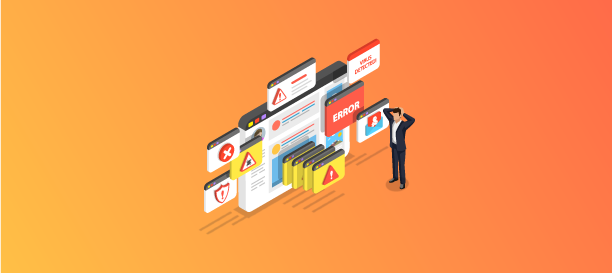Ransomware vs. other malware attacks
Organizations are familiar with the risks of malicious software. Viruses can corrupt data, and malware can be used to illegally access and exploit sensitive information for financial gain. Examples include the sale of credit card numbers, identity theft, and the sale of Social Security numbers. The sheer variety and quantity of malware on the internet is seemingly endless.
We talked about phishing in a previous blog post. Phishing uses deception to get access to private information or to take login details and break into IT systems. However, this is not the only form of attack.
Cyber criminals use malicious programs such as viruses, worms, and trojan horses to break into IT networks. These viruses often come disguised as legitimate email attachments or links to downloads and can cause serious damage. The best way to protect yourself is to regularly create backups of all your data.
In order to secure your business from potential data theft, it is also necessary to have the expertise and tools to remain up-to-date with firewalls, anti-virus software, and the constantly changing world of cyber security.
Ransomware is a malicious type of cybercrime. It goes beyond data corruption, as hackers can take control of a victim’s data. The hackers then demand money to restore access.
Unfortunately, even backups can become infected, leaving companies completely vulnerable to extortion if they want their data back. It is important to understand the threat. Having secure backups that are not vulnerable to the attack is also essential to prevent it.
The point is that cyber security is a highly specialized and intricate field. It requires more than purchasing a basic anti-virus program. Small and medium businesses may not have the expertise, time, or resources needed to design and maintain a secure IT system. This is why cyber security is such an important area, and should be taken seriously.
Bringing in a Managed IT Services Provider is beneficial in this situation. They can help with protective measures for data, training, and keeping up with the IT infrastructure.
There is no end to the volume and type of malware out there in cyberspace. For a very long time, organizations were aware that viruses could attack their data, render it corrupted and unusable. They were also aware that malware was used to steal data and use it for–primarily–monetary gain. Sell off banks of credit card numbers, steal identities, re-sell Social Security numbers, etc.
Phishing, as we talked about in an earlier blog, is a set of tricks to get access to personal information and probably even to your IT network by stealing access credentials, but that’s not the only way. Cybercriminals also deploy various malware such as viruses, worms and trojan horses to attack IT networks. These malware usually gain entry into the system disguised as genuine email attachments, links to file downloads, etc. and then corrupt the data. If it is a case of a virus whose sole intent is criminal mischief, your surest protection are consistent and frequent backups. In the case of malware whose goal is theft, you need to have the technical expertise to maintain the security firewalls, anti-virus software, and knowledge of the field of cyber crime to protect your organization. Ransomware is a newer threat that requires additional knowledge in order to ensure that backups are clean in case of an attack. Ransomware, as the name suggests, is a kind of malware attack that goes beyond data corruption where the cybercriminals hold the data hostage and demand a ransom from the business for restoring data access. Backups can also be infected with a ransomware virus, leaving you completely vulnerable to ransom charges if you want your data back.
The point here is that cybersecurity is a specialized field. It is a lot more than buying a consumer grade anti-virus application. In general, in small- and medium-sized organizations, in-house tech staff may not have the depth of experience and/or the time to keep up with the latest issues and threats in cybercrime, necessary to design and maintain a well-defended IT infrastructure. In the area of cyber security,
It makes sense in such a scenario to bring an experienced Managed Services Provider (MSP) on board who can help you with data security, training and general up-keep and maintenance of your IT infrastructure.
